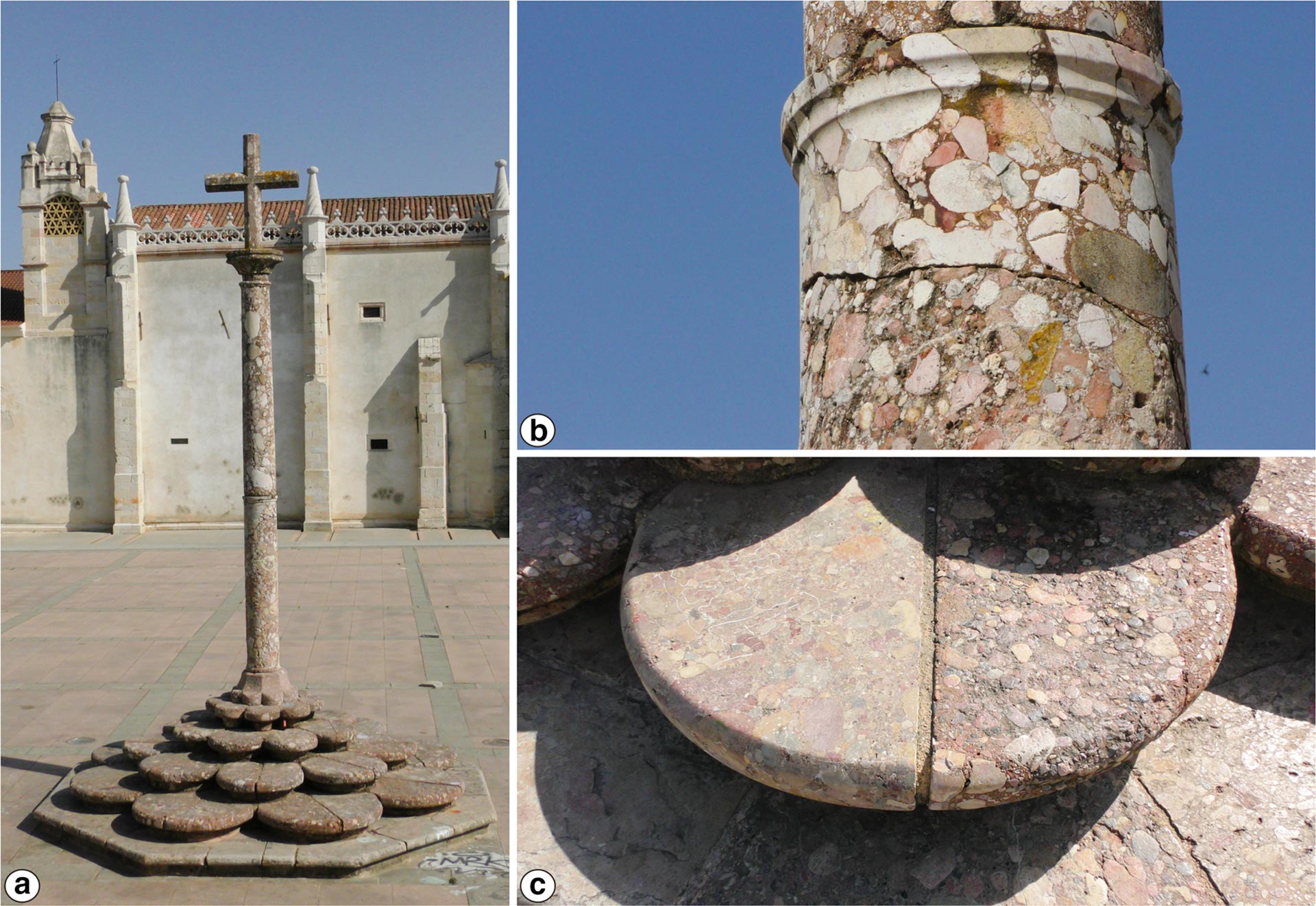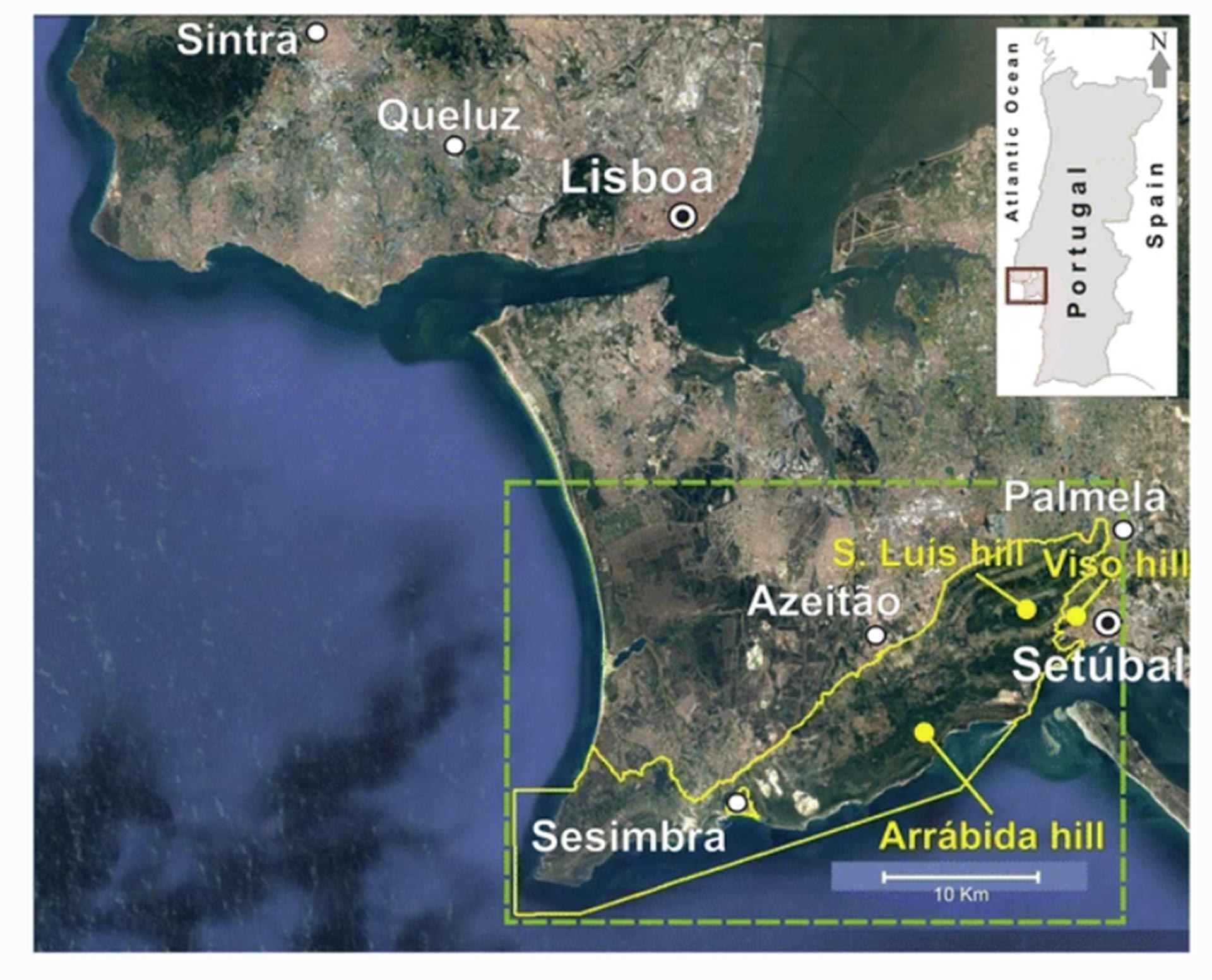
Arrabida Breccia: a) Setubal’s Calvary, b) Detail of the column, c) Detail of the base.
Local native name
Year designation
Lithology
Aesthetics
Geological settings
Mesozoic – Upper Jurassic – base of the Unit “marls, clays, limestone with black pebbles and conglomerates of Arrábida”. It crops out in a discontinuous strip around the anticlines forming the main reliefs of the Arrábida tectonic chain. The discontinouity of the occurrence is caused by highly variable thicknesses, corresponding to paleo-terra-rossa levels associated with a paleokarst.
Location
Arrabida Natural Park covering the southernmost margin of the Setubal Peninsula south of Lissabon.
Arrabida Breccia: a) Setubal’s Calvary, b) Detail of the column, c) Detail of the base.
The stone of the ManuelineStyle
The Brecha da Arrábida is one of the most emblematic Portuguese ornamental stones exploited since the Roman period. During centuries countless bigger and even small quarries occured, consisting of cavities from which rudimentary blocks of outcroppuing breccia were extracted. The second half of the 20th century was marked by a period of intense mining activity. The Brecha da Arrábida has been used for at least 2000 years since the occupation of Iberia by the Romans, and which evolved over time from exterior to interior structures not least because they are sensitive to the weather and their colourfulness is better preserved inside. Since the beginning of the Baroque, it is almost exclusively linked to the interior decorative arts, in polished finishing. Its use had a greater expression linked to the Gothic-Manueline style, closely associated with the epic Portuguese, roughly in the transition in fifteenth to sixteenth centuries particularly during the reign of King Manuel I who would have particular preference for this rock. Its use is characterised by being quite confined, especially as the resource has always been relatively scarce regarding known deposits. Although most of the known applications are located in Portugal, especially in the regions of Setúbal and Lisbon (Monastery of Jesus in Setúbal, Church of Our Lady of the Salas, the convent of Christ, the Cathedral of Funchal and the palace of Santo, Pena Palace (in Sintra), there are also examples of its application in other countries, namely in the Mediterranean Europe (Cathedral of Santiago de Compostela) and in several churches in Brazil, largely in buildings classified as of National Interest and in building classified as World Heritage or Architectural Heritage (UNESCO).
- Author(s)
Jose Carlos Kullberg, Antonio Prego, LuÍs Lopes, Tiago Alves, Ruben Martins

